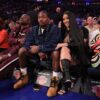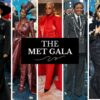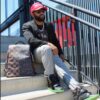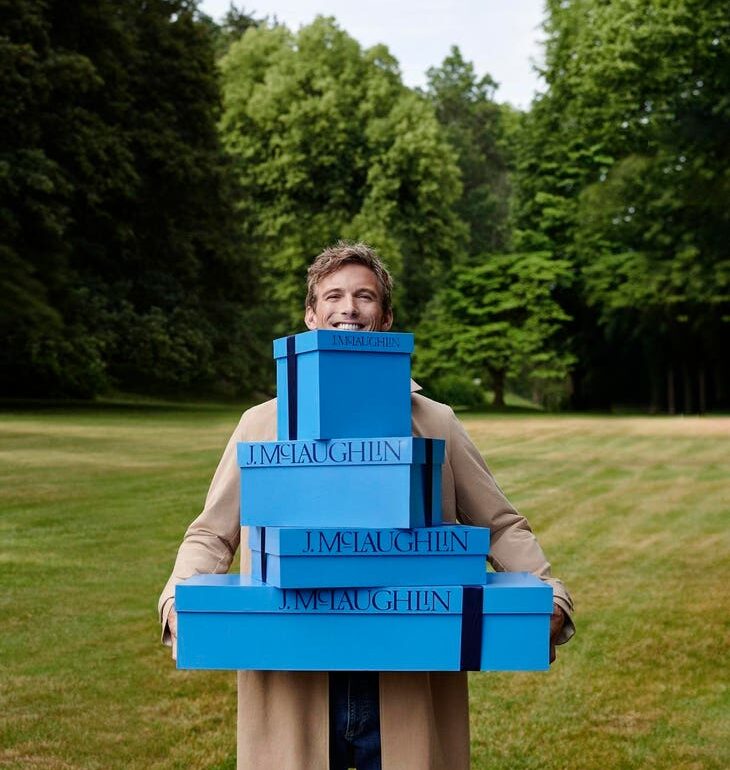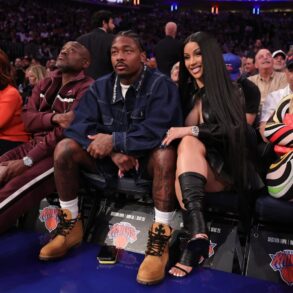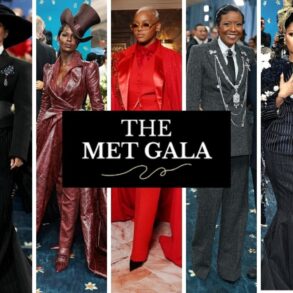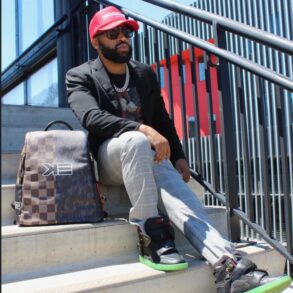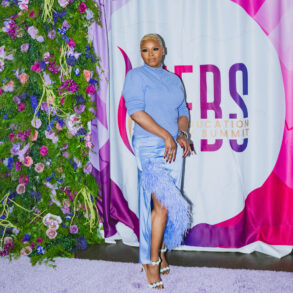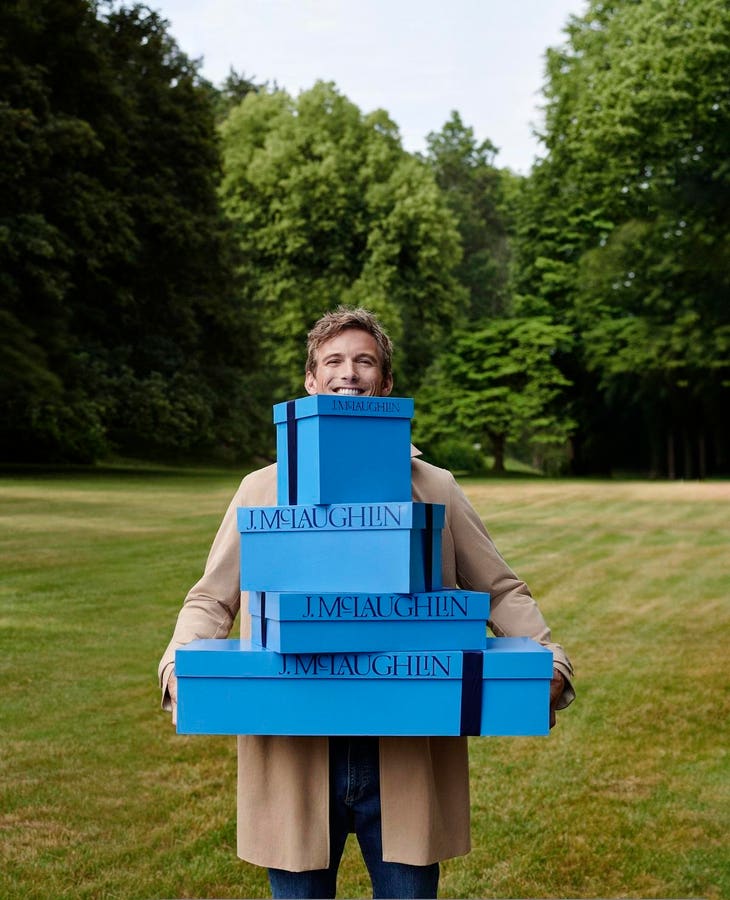
J.McLaughlin started as a men’s haberdashery shop on Manhattan’s Upper East Side in 1977. Opened by brothers Jay and Kevin McLaughlin, the store was designed to fit into its upscale neighborhood with classic men’s fashion that fit right in too.
Originally, J.McLaughlin dressed men, but early on, women asked for the same fashion sensibility for themselves. After that, things exploded, and today J.McLaughlin has expanded to 170 stores, all located in neighborhood stores designed for the local community.
It became the professional and country-club class’ secret to dressing tastefully. “She doesn’t want her clothes to arrive before she does,” co-founder and creative director Kevin McLaughlin shared with me. “We bring her as close to ‘fashion’ as she wants to go without taking it too far.”
In an unexpected twist, the fashion mainstream has caught up with J.McLaughlin’s quiet luxury style, a pillar of the brand. Now is the time to dial up the volume on the J.McLaughlin brand, so it’s partnered with creative fashion legend Trey Laird for a brand refresh and new advertising campaign to bring the brand out of the shadows and into the spotlight.
GQ called Laird “fashion’s go-to creative guy.” He’s worked with just about anybody that matters in fashion, including Donna Karan, Tommy Hilfiger, Tom Ford, Calvin Klein, Karl Lagerfeld, Diane von Furstenberg, Rag & Bone and many other notables.
But more than introducing itself in a slick advertising campaign, J.McLaughlin has the goods to deliver on the promises it makes to the new customers it attracts and the loyal ones it intends to keep.
Long And Winding Road
Since its founding, J.McLaughlin has marched to its own drummer. Kevin calls it a “counterintuitive retail strategy,” with an emphasis on the intuitive. “Jay and I learned from the ground up. We did it largely by intuition,” he explained. Jay has since retired from the company.
Planting stores street-side in local communities, like its first Upper East Side spot designed to fit into the neighborhood, has been its guiding principle. That requires each store be custom-designed, not from a cookie-cutter.
“Since the beginning, we resisted going into malls to sit next door to The Limited or Gap. It didn’t seem appropriate and to diminish the brand,” he said and added, “It’s benefited us to be local, loyal and small. Our customers have a proprietary feeling about our stores because we are part of their community.”
J.McLaughlin Palm Beach, FL store
KIM ZUCCARO / CAPEHART PHOTOGRAPHY
That “think small, think local” approach has served the company well. Every store in its fleet is profitable, and it boasts a highly engaged and loyal customer base with an average order size and lifetime value well over industry standards.
After the company was acquired by Brentwood Associates in 2015 for an undisclosed sum, it has been focused on retail expansion following the same model. At the time, it operated just over 100 stores and now tops 170, with six more stores coming before the holidays.
Refining The Formula
Spearheading the company’s growth since 2016 has been CEO Mary Ellen Coyne, who was recruited from her chief merchandising officer position at Ralph Lauren and prior to that, she did stints with Macy’s, Ann Taylor and Banana Republic.
She’s brought business science to the intuitive art the company has long relied on. “Mary Ellen has provided a level of professionalism that has helped us grow exponentially. She and I have been a good combination,” Kevin said.
And she’s proud to reel off the numbers. The company has produced double-digit growth over the last ten years, reaching over $200 million in sales, including high-single-digit same-store sales growth. It’s consistently maintained 70% margins with over 80% of sales made at full price. And while e-commerce growth has outpaced that in the stores, still 75% of sales are generated on the sales floor.
“After my years in retail, it’s the simplest formulas that work best,” Coyne said. That means offering superb quality that delivers greater value for the money. J.McLaughlin prices are more premium than luxury, and its styles are designed to give customers the understated fashion they want. “We remain fiercely focused on the customer and what she wants to wear now.”
Consistency is also a core value that customers find season after season. And comfort is always a priority. “We were doing functional fabrics before anyone was talking about functional fabrics,” she maintained. The brand has a high penetration of knit fabrics with stretch and ease to be both “forgiving and flattering.” Further, most of its clothing is machine washable and ideal for travel.
She tells of a customer who accompanied her author husband on a world book tour, carrying only three J.McLaughlin dresses and a few wraps. “She could wash them in the sink, hang dry them overnight, pack her bag in the morning and nothing ever wrinkled,” she exclaimed.
Women’s slacks could be said to be the brand’s hero product with consistent fit and tasteful style appropriate for women aged 45 through 65 years, who are the company’s sweet spot, though Coyne says often daughters, mothers and grandmothers shop together. Of note, the leading edge of the Millennial generation is now 42 years of age, so she is rapidly growing into the brand.
Coyne describes the core customer as well-educated, affluent and often owns more than one home. “We have customers who come in to buy a pair of pants in two colors, then she’ll buy six pairs, so she can have a set in each of her three homes.”
Refresh For Men
Part of the brand’s refresh is to bring the brand back home to men. “In the early days when capital was limited, everything we did was driven by return on investment. We found womenswear had a quicker return on investment so we pivoted to that. We became a victim of our own success, so women’s grew and men’s diminished,” Kevin shared.
Even though the company continued to offer men’s clothing, it moved to the back of the store and fell to only about 10% of revenues. But Coyne sees a great opportunity in the men’s market with plans to double men’s sales over the next 18 to 24 months. “And we think we can double it again after that,” she added.
A men’s store in Palm Beach, FL will be opening November 1 to test the waters, with the company eyeing a few more locations if it proves as successful as the company believes it can be.
“Men may shop at a lower frequency than women and may be a bit more price sensitive, but men are also very loyal,” Kevin said. “If you give men good service like we always do and have great quality clothes, they are inclined to stay with you and be loyal.”
Having come from Ralph Lauren, Coyne knows a thing or two about men’s mindset when it comes to fashion.
“Some of the big players have lost their way in men’s, so we see white space that they have created. Kevin and the team are designing unbelievable quality with some playfulness. It’s what men need right now.
“There’s a void in the market for men who want to look dressed right, but without having to wear a suit and look all ‘Wall Street.’ We’re going to offer him something incredibly tasteful, but with a little bit of fun in it,” she concluded.
This post was originally published on this site be sure to check out more of their content.

